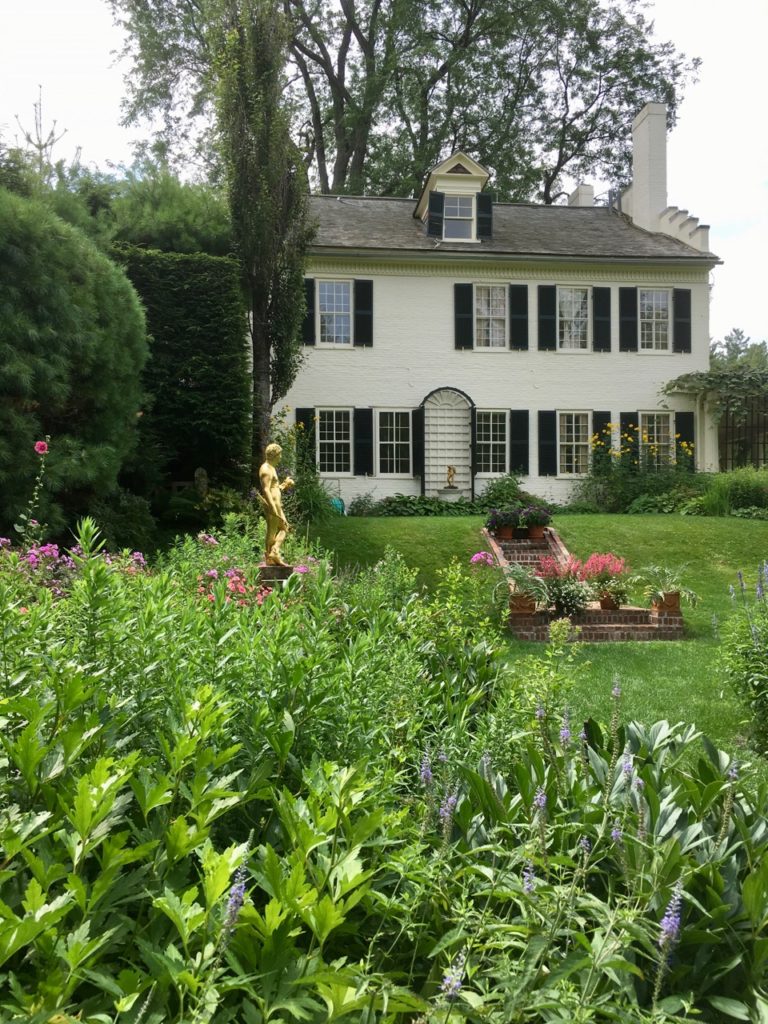Augustus Saint-Gaudens was the son of immigrant parents. His father became a shoemaker in New York City, and Augustus became one of the most famed American artists of the late 19th, early 20th century. His bronze statues of Civil War era politicians and military generals are the artwork of public spaces in big cities, instantly recognizable. At Teddy Roosevelt’s request, he also designed the art on some of the classic coins of the era.
He had a retreat and studio in Cornish, New Hampshire and after his (untimely, early) death, his wife worked to make sure he was remembered, part of which entailed giving the land to the nation and turning it into a national historic site, New Hampshire’s one and only national site.
I, of course, knew none of this before I drove up and parked in a pretty grassy field for RV parking. I felt like I should have, though. Many times during this journey I have been confronted with my ignorance — about wildflowers, bird identification, geography, geology, plumbing functioning, electricity… Yeah, moving into a camper van is a good way to discover how very much you don’t know. But it’s also a great way to learn unexpectedly.

I had a lovely hour at the historic site watching the video about his life, wandering around the studios and admiring art, and appreciating the gorgeous gardens. I especially liked the honesty of the historical information: Saint-Gaudens had an affair with his model, an illegitimate son, and a strained relationship with his wife, all of which was openly addressed in the displays about his life. Even though my opinion of him immediately plunged when I found out he’d cheated on his wife, the details made their story much more interesting than a generic recitation of dates would have been. They became a story, real people, not just history.
Post the historical site, I headed into the mountains of New Hampshire. I’d been told that the Kancamagus highway was worth the drive, so even though it was far from being the most direct route to my destination in Maine, I headed that way.
It was a nice highway. I am, however, lamentably spoiled. I think I should drive it sometime in the middle of autumn to be truly impressed, because I mostly drove along it thinking about all the other beautiful highways I’ve driven on in the past three years. Sure, it was pretty, but it was no Upper Peninsula of Michigan.
But I stopped at Blackberry Campground, a National Forest campground, around 3PM and paid $25 for a dry camping spot for the night. My spot was huge, had a cement pad and a nice fire pit and was surrounded by trees. I would definitely give it solid marks for pretty and secluded. But I totally picked the wrong side of the campground. Even though I couldn’t see the road, I could hear it. And sadly for me, big trucks drive that road making big truck noises as they go up the hills.
Even more sadly for me — well, sort of — the weather had gone quite dire. Fantastic thunderstorms and pounding rain. I say “sort of” because it’s still really fun for me to be in the van when the rain is pounding down. Even after my intense winter of California rain, I love the music rain makes on the van roof and the punctuation of thunder rumbles makes it all the better. But it did mean I didn’t wind up exploring the campground at all. I’d picked the campground because it was a Conservation Corps Campground and most of them have some beautiful old stone structures. This one had a nearby hike to a covered bridge, too. In better weather, it would have been a fun place to wander around. So it goes. Maybe next time. And maybe next time in autumn, when the leaves should be splendid and the mosquitoes should be frozen.